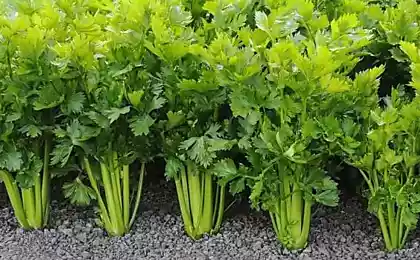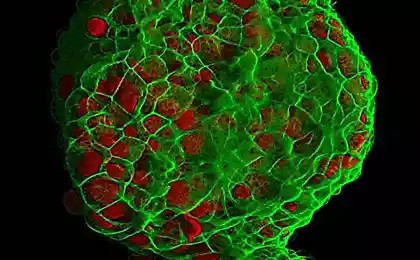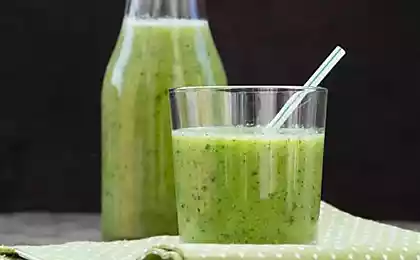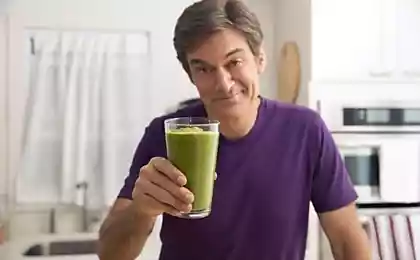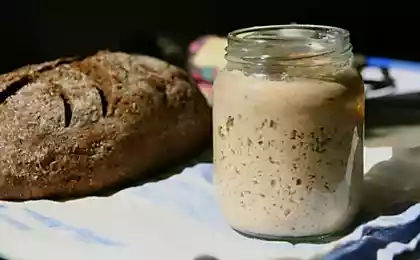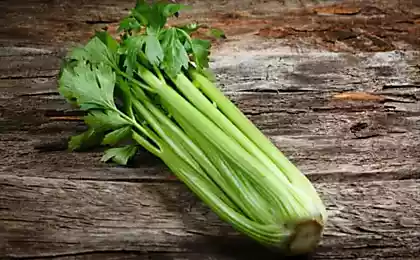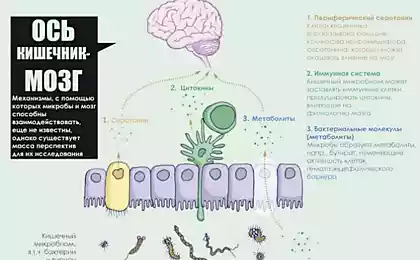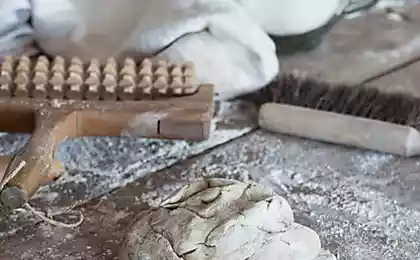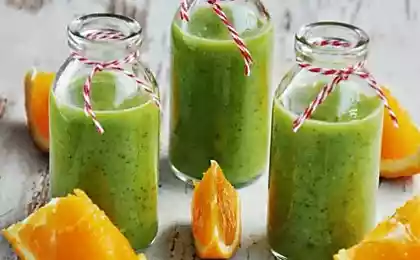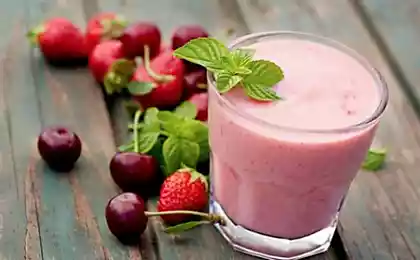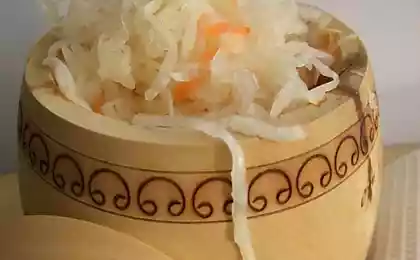631
Phenomenal use pickled vegetables
Caroline Barringer (Barringer Caroline) is a practicing dietoterapia and specialist preparation products. I first met Caroline at the November 2011 event at the Weston Price Wise Traditions, where I had the opportunity to try the amazing pickled vegetables production.
I immediately included them in their diet, and in about six weeks I was pleased to see that this minor change dramatically reduced the formation of plaque — my constant problem.
Phenomenal use of pickled vegetables for the health of Cultured or fermented foods have long been known in almost all the original nutrition, where they have always been valued for their health benefits.
As a result of the fermentation process obtained useful microbes that are extremely important for human health as they help balance the intestinal flora, thereby boosting overall immunity.
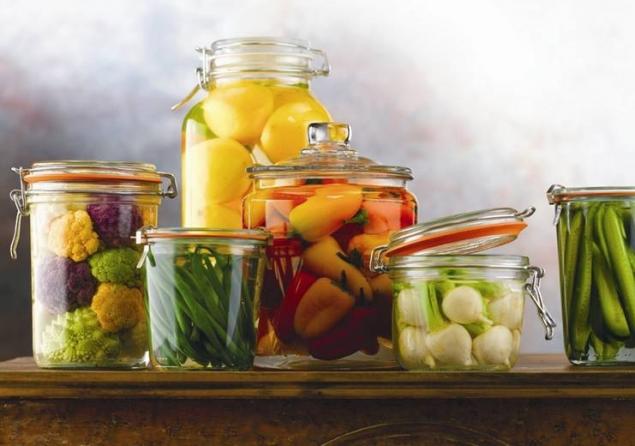
In addition, your gut is literally your second brain, which produces even more of the neurotransmitter serotonin (which is known to be beneficial for your mood) than your brain, so intestinal health is helpful for both mind and body.
Pickled foods – it is also one of the best available chelators and detox agents, meaning they can help your body to get rid of a wide range of toxins, including heavy metals. And you don't need to eat them in huge quantities.
Caroline recommends eating a quarter to half Cup (60-120 g)of fermented vegetables or other cultured products, such as raw yoghurt, with one to three times a day. Keep in mind that since cultured foods are very efficient detox agents, you may experience symptoms of detoxification, or "healing crisis" when you begin to use them immediately in large quantities. Caroline recommends beginning with very small servings and bring up to a quarter or half Cup per serving. This will help your intestinal flora to adapt.
"If you introduce these foods too much too fast, there will be symptoms of decay which cause the discomfort and confusing. It is at this stage people refuse to go further. Because of dysbiosis, the innate intelligence of their body tells them to eat more cultured foods. Therefore, they carelessly take and eat a whole jar of vegetables. Then they it's a healing crisis and they are afraid to try cultured foods," warns Caroline."... Start slowly – so you can avoid the headaches and flashes... you will notice that you will urinate more naturally, you will have the right chair will change its shape, and all this will have beneficial effects. Trust the inner voice, and if you see or feel something wrong, do not give up cultured products, saying, "Oh, I'm not comfortable – I have a response to them". That's not what tells you your body. Your body is telling you: "slow down".
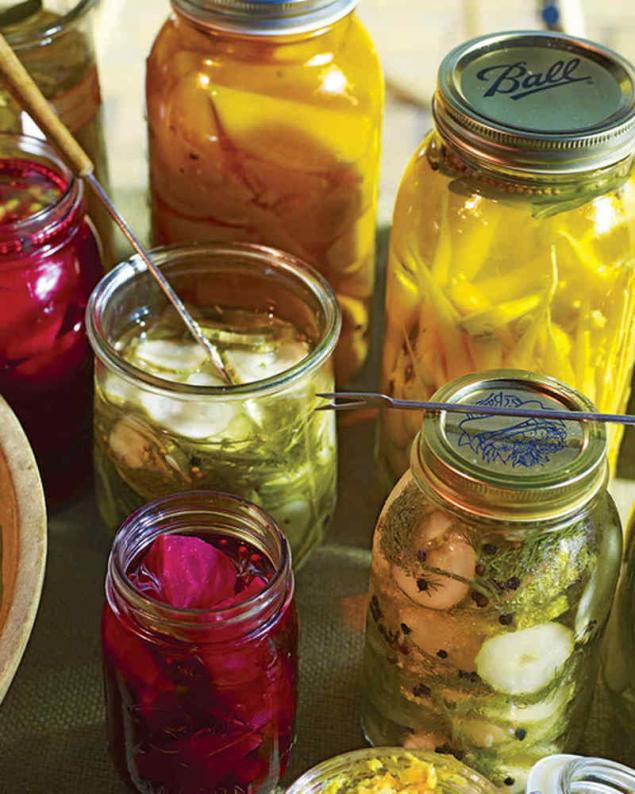
Varieties cultivated products ideally, your diet should include a variety of cultured foods and beverages, because each product will populate your gut with many different microorganisms. To fermented foods that you can easily prepare at home include:
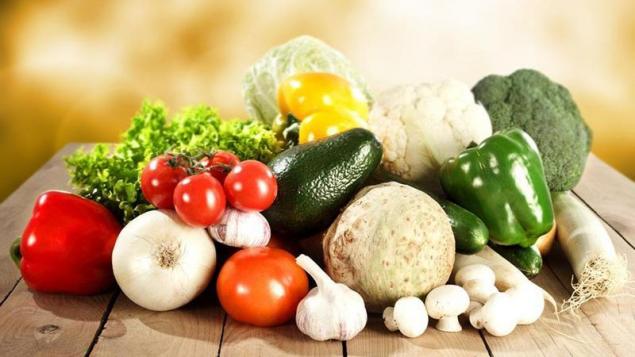
Here's a quick recipe for fermented vegetables from Caroline:
"Just place the jar in a [portable] cooler and place it on the floor (on the floor usually too cold due to the fact that it rises from the heat). Banks in the cooler wrap in an old towel and put another bowl of HOT water so it was warm inside. Change jar with hot water when you remember, not to dwell on it. You can put the jars into the pot or baking dish, wrap them in a towel and place them in the oven (OFF, of course) is enabled it light. The heat from the bulb will warm the vegetables. Another option is to put as many jars as will fit in the dehydrator and set it to the minimum temperature, but in most dryers is placed not more than a couple cans. It is better to prepare many jars at a time due to the fact that cooking vegetables is a laborious process. I like the cooler or the oven. They are always at it."
And last but not least: don't be tempted to eat straight from the jar! So the Bank can get organisms from your mouth. Instead, take a clean spoon, take as much as going to eat and then making sure the remaining veggies are covered with brine, close the jar.
Delicious cultured vegetables: tips and tricks 1.At least 80 percent vegetable mix should be cabbage. Carrots, sweet potatoes, beets, turnips and other hard root vegetables can also be a great basis of your cultured vegetables, but they are not as economical.

2. Five or six heads of cabbage of the average size work 10-14 liter jars of pickled vegetables.
3. Can use red or green cabbage, but make sure it is thick and heavy, with well fitting sheets. Lighter, more friable varieties will turn into a mess, which leavens the bad.
4. Add other vegetables according to your taste, such as red, yellow or orange sweet peppers, American walnut, zucchini, dill, parsley, curly Kale, Collard greens, red or yellow beets. Caution: do not overdo it with the sweet pepper because its taste can score the taste of other vegetables. One small pepper on 12-14 cans too many.
5. Use tolmachevskii vegetables!
6. Vegetables put only purified, as the skins can add bitterness.
7. Adding aromatic plants such as onions, garlic and ginger, remember that fermenting increases the flavor multiple times so be careful and do not overdo it! A few cloves of garlic medium size is enough to soft taste was felt in banks of ten or more.

8. Onions, as a rule, there is very much no matter how little to put it in, so Caroline do not put it in your mixture.
9. By adding herbs, use only fresh, organic and in small quantities. The flavour will add: Basil, sage, rosemary, thyme and oregano.
10. To increase the content of minerals, vitamins and fiber, add sea vegetables or seaweed. You can add pieces of whole red algae or use flakes. Wakame and sea palm, which have no fishy aftertaste, needs to be soaked and cut into pieces of desired size. But Arame and hijiki have a pronounced fishy flavor.
11. In the summer of 12-14 cans enough for two packets of yeast, and in the winter you will need three bags.
12. Summer vegetables, usually prepared for three to four days. In the winter it can take up to seven days. Just open a jar and try it. When you enjoy the flavor and texture, remove the jar in the refrigerator.
Everything you need: the Right tools greatly facilitate the entire process. You only need to have jars for canning and food processor to slice large amount of vegetables.
Try to buy the wide mouth jars because they are much easier to work with. In a Bank easily passes the hand to the bottom, and tightly fill the jar with the vegetables is very important to avoid air pockets.
Caroline explains:"we Need to squeeze all the oxygen to your cultured veggies or whatever you cultivate, it was anaerobic, i.e. without oxygen. This is best done under water or liquid in the Bank. And wide mouth the banks will give you a good opportunity to push content. The potato masher for potatoes is perfect So when you close the Bank, it will be the perfect anaerobic conditions for cultivation". published
©Dr. Joseph Mercola
P. S. And remember, only by changing their consumption — together we change the world! ©
Source: russian.mercola.com/sites/articles/archive/2016/09/26/%D0%BA%D0%B2%D0%B0%D1%88%D0%B5%D0%BD%D0%BD%D1%8B%D0%B5-%D0%BE%D0%B2%D0%BE%D1%89%D0%B8.aspx
I immediately included them in their diet, and in about six weeks I was pleased to see that this minor change dramatically reduced the formation of plaque — my constant problem.
Phenomenal use of pickled vegetables for the health of Cultured or fermented foods have long been known in almost all the original nutrition, where they have always been valued for their health benefits.
As a result of the fermentation process obtained useful microbes that are extremely important for human health as they help balance the intestinal flora, thereby boosting overall immunity.

In addition, your gut is literally your second brain, which produces even more of the neurotransmitter serotonin (which is known to be beneficial for your mood) than your brain, so intestinal health is helpful for both mind and body.
Pickled foods – it is also one of the best available chelators and detox agents, meaning they can help your body to get rid of a wide range of toxins, including heavy metals. And you don't need to eat them in huge quantities.
Caroline recommends eating a quarter to half Cup (60-120 g)of fermented vegetables or other cultured products, such as raw yoghurt, with one to three times a day. Keep in mind that since cultured foods are very efficient detox agents, you may experience symptoms of detoxification, or "healing crisis" when you begin to use them immediately in large quantities. Caroline recommends beginning with very small servings and bring up to a quarter or half Cup per serving. This will help your intestinal flora to adapt.
"If you introduce these foods too much too fast, there will be symptoms of decay which cause the discomfort and confusing. It is at this stage people refuse to go further. Because of dysbiosis, the innate intelligence of their body tells them to eat more cultured foods. Therefore, they carelessly take and eat a whole jar of vegetables. Then they it's a healing crisis and they are afraid to try cultured foods," warns Caroline."... Start slowly – so you can avoid the headaches and flashes... you will notice that you will urinate more naturally, you will have the right chair will change its shape, and all this will have beneficial effects. Trust the inner voice, and if you see or feel something wrong, do not give up cultured products, saying, "Oh, I'm not comfortable – I have a response to them". That's not what tells you your body. Your body is telling you: "slow down".

Varieties cultivated products ideally, your diet should include a variety of cultured foods and beverages, because each product will populate your gut with many different microorganisms. To fermented foods that you can easily prepare at home include:
- Cultured vegetables (including pureed baby food)
- Chutney
- Condiments, such as salsa and mayonnaise
- Fermented milk such as yoghurt, kefir and sour cream
- Fish such as mackerel and Swedish Gravlax

Here's a quick recipe for fermented vegetables from Caroline:
- shred the vegetables;
- squeeze the juice from the celery. It will serve as a brine, since it contains natural sodium and keeps the vegetables from oxygen. This eliminates the need for sea salt, which prevents growth of pathogenic bacteria;
- tamp the vegetables, celery juice and the inoculants (starter culture, such as kefir grains, whey, or purchase powders, for example, our complete probiotics, which are great for vegetables) in a quart jar for canning with a wide throat. Can use a potato masher to tightly fill the jar to eliminate air pockets;
- cover the jar with a cabbage leaf, with tucked edges inside. Make sure the vegetables are completely covered with celery juice and the juice fills the jar to the brim, leaving no air bubbles;
- put the lid on and leave in a warm, slightly humid place for 24-96 hours, depending on the cultivated product. The ideal temperature range is 20-22 degrees Celsius; maximum – 25 degrees. Remember that heat kills germs!
- cooked vegetables keep in the refrigerator to slow the fermentation process.
"Just place the jar in a [portable] cooler and place it on the floor (on the floor usually too cold due to the fact that it rises from the heat). Banks in the cooler wrap in an old towel and put another bowl of HOT water so it was warm inside. Change jar with hot water when you remember, not to dwell on it. You can put the jars into the pot or baking dish, wrap them in a towel and place them in the oven (OFF, of course) is enabled it light. The heat from the bulb will warm the vegetables. Another option is to put as many jars as will fit in the dehydrator and set it to the minimum temperature, but in most dryers is placed not more than a couple cans. It is better to prepare many jars at a time due to the fact that cooking vegetables is a laborious process. I like the cooler or the oven. They are always at it."
And last but not least: don't be tempted to eat straight from the jar! So the Bank can get organisms from your mouth. Instead, take a clean spoon, take as much as going to eat and then making sure the remaining veggies are covered with brine, close the jar.
Delicious cultured vegetables: tips and tricks 1.At least 80 percent vegetable mix should be cabbage. Carrots, sweet potatoes, beets, turnips and other hard root vegetables can also be a great basis of your cultured vegetables, but they are not as economical.

2. Five or six heads of cabbage of the average size work 10-14 liter jars of pickled vegetables.
3. Can use red or green cabbage, but make sure it is thick and heavy, with well fitting sheets. Lighter, more friable varieties will turn into a mess, which leavens the bad.
4. Add other vegetables according to your taste, such as red, yellow or orange sweet peppers, American walnut, zucchini, dill, parsley, curly Kale, Collard greens, red or yellow beets. Caution: do not overdo it with the sweet pepper because its taste can score the taste of other vegetables. One small pepper on 12-14 cans too many.
5. Use tolmachevskii vegetables!
6. Vegetables put only purified, as the skins can add bitterness.
7. Adding aromatic plants such as onions, garlic and ginger, remember that fermenting increases the flavor multiple times so be careful and do not overdo it! A few cloves of garlic medium size is enough to soft taste was felt in banks of ten or more.

8. Onions, as a rule, there is very much no matter how little to put it in, so Caroline do not put it in your mixture.
9. By adding herbs, use only fresh, organic and in small quantities. The flavour will add: Basil, sage, rosemary, thyme and oregano.
10. To increase the content of minerals, vitamins and fiber, add sea vegetables or seaweed. You can add pieces of whole red algae or use flakes. Wakame and sea palm, which have no fishy aftertaste, needs to be soaked and cut into pieces of desired size. But Arame and hijiki have a pronounced fishy flavor.
11. In the summer of 12-14 cans enough for two packets of yeast, and in the winter you will need three bags.
12. Summer vegetables, usually prepared for three to four days. In the winter it can take up to seven days. Just open a jar and try it. When you enjoy the flavor and texture, remove the jar in the refrigerator.
Everything you need: the Right tools greatly facilitate the entire process. You only need to have jars for canning and food processor to slice large amount of vegetables.
Try to buy the wide mouth jars because they are much easier to work with. In a Bank easily passes the hand to the bottom, and tightly fill the jar with the vegetables is very important to avoid air pockets.
Caroline explains:"we Need to squeeze all the oxygen to your cultured veggies or whatever you cultivate, it was anaerobic, i.e. without oxygen. This is best done under water or liquid in the Bank. And wide mouth the banks will give you a good opportunity to push content. The potato masher for potatoes is perfect So when you close the Bank, it will be the perfect anaerobic conditions for cultivation". published
©Dr. Joseph Mercola
P. S. And remember, only by changing their consumption — together we change the world! ©
Source: russian.mercola.com/sites/articles/archive/2016/09/26/%D0%BA%D0%B2%D0%B0%D1%88%D0%B5%D0%BD%D0%BD%D1%8B%D0%B5-%D0%BE%D0%B2%D0%BE%D1%89%D0%B8.aspx
Natural amp hair growth
Displacement of the generations: the World is getting worse, worse than you think
